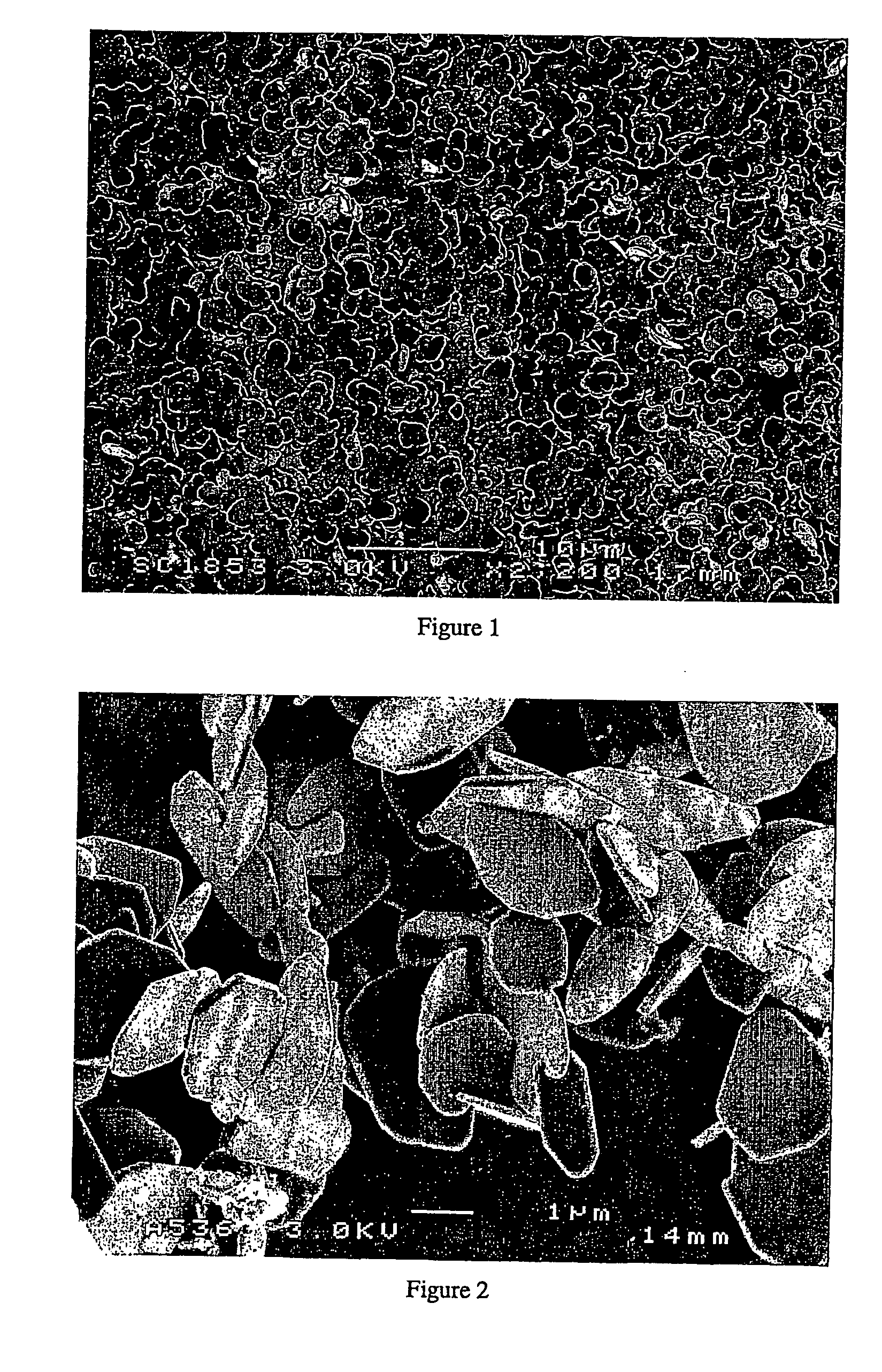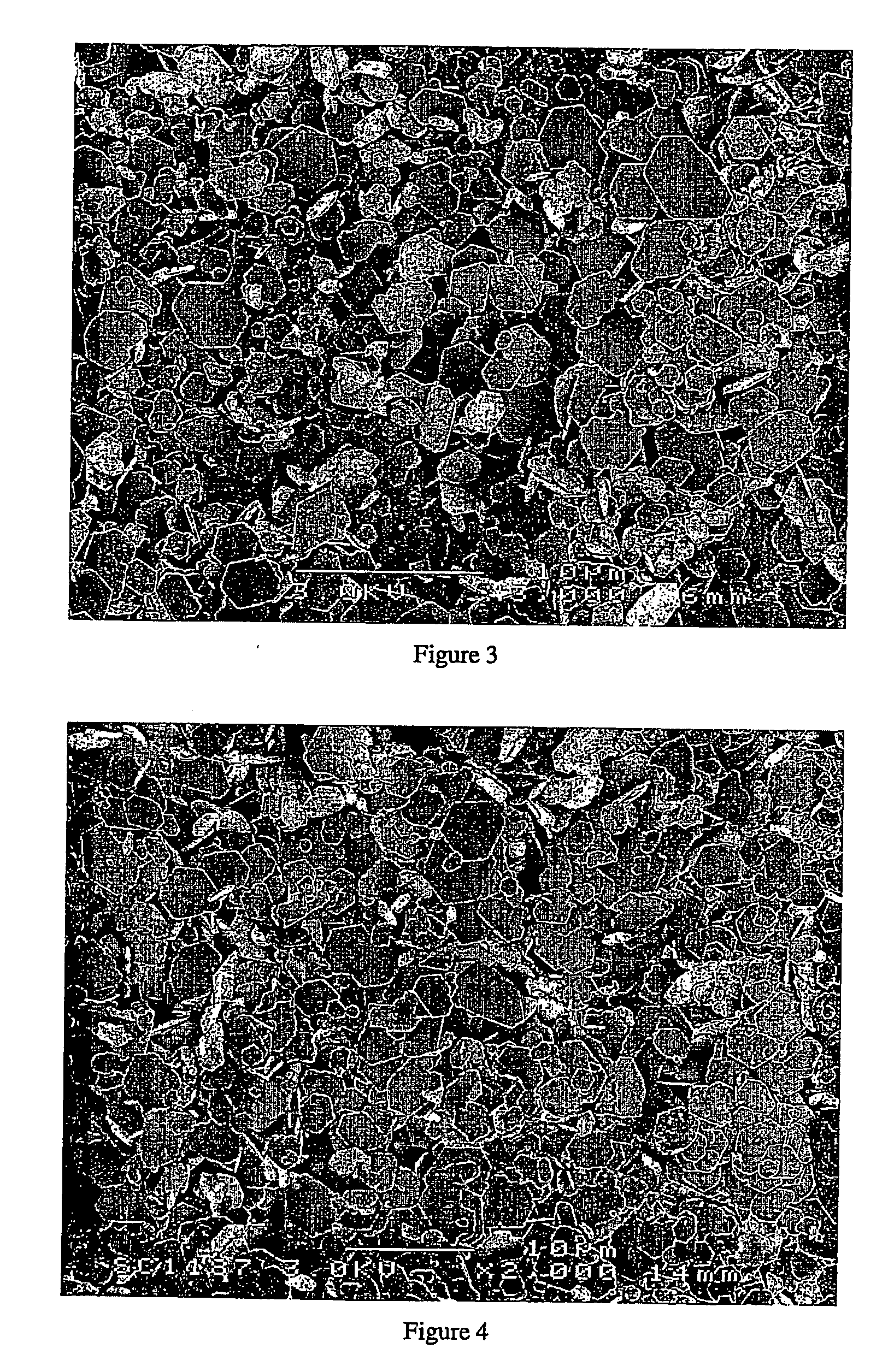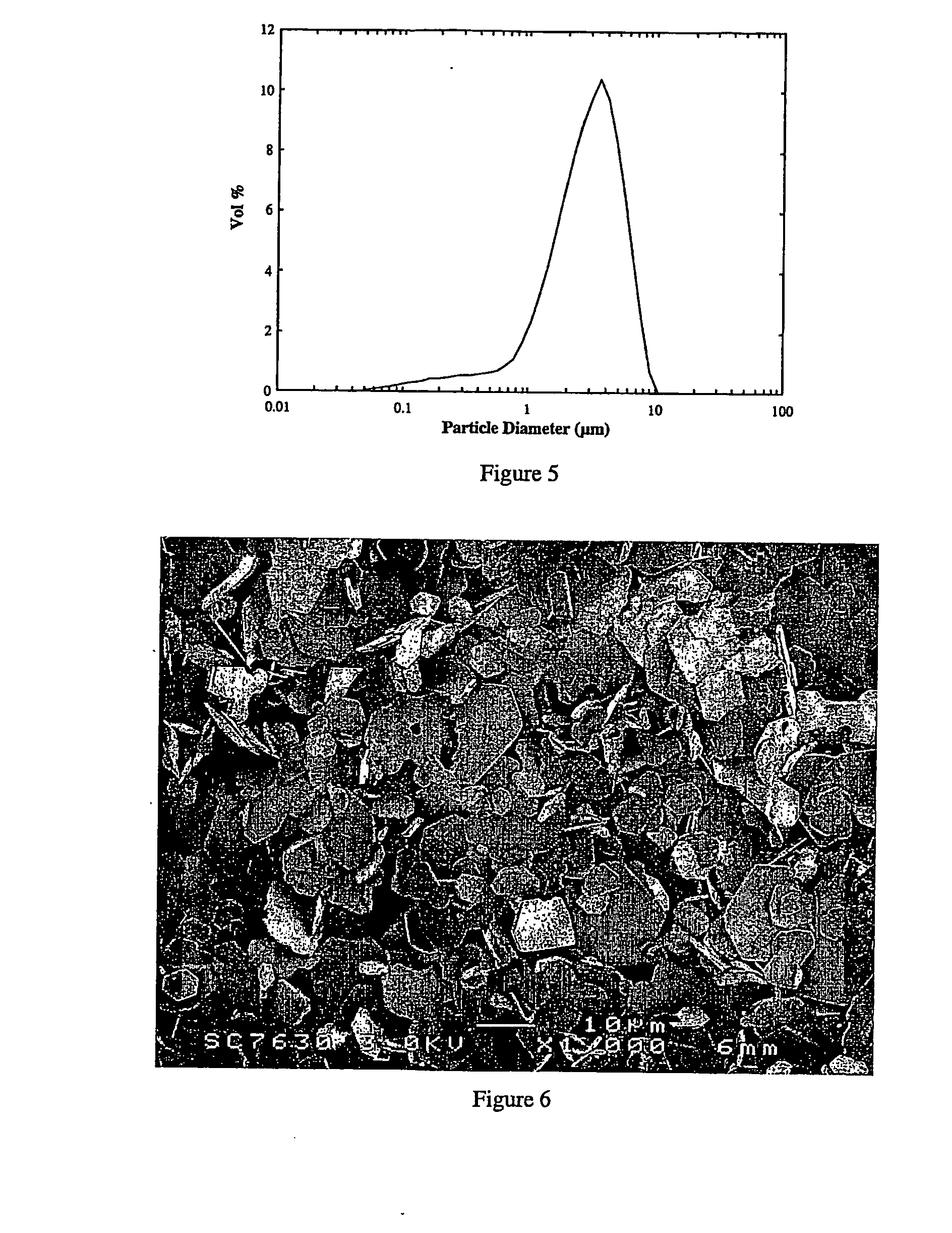Process for the production of ultrafine plate-like alumina particles
a technology of alumina particles and alumina pigments, which is applied in the field of substantially discrete production of ultrafine platelike particles of alumina, can solve the problems of agglomeration of particles, prior art requiring uneconomical temperature and pressure conditions to form plate-like particles, etc., and achieves the effects of convenient dehydration, convenient handling, and convenient dehydration
- Summary
- Abstract
- Description
- Claims
- Application Information
AI Technical Summary
Benefits of technology
Problems solved by technology
Method used
Image
Examples
example 3
Al(OH)3 in NaCl Diluent, With Mineraliser, Solid State Heat Treatment Leading To 0.5-5 Micron Plate-Like Particles
[0067] 1.04 g aluminium hydroxide as a precursor was milled with 6.88 g NaCl as a diluent and 0.08 g cryolite (Na3AlF6) as a mineraliser for 3 hours in a Spex mixer mill using 80 g of 12.7 mm diameter stainless steel balls to form nano-sized particles of aluminium hydroxide. Cryolite is known to be soluble in sodium chloride, forming a eutectic diluent-mineraliser system, with eutectic temperature 730° C.
[0068] A sample of the resulting powder was heat treated at 500° C. for 30 minutes and washed in de-ionised water, in order to examine the particle size prior to transformation to alpha phase. X-ray diffraction measurements confirmed that the resulting material was gamma alumina. Electron- microscopy studies revealed that the particles were equiaxed nano particles approximately 5 nm in size.
[0069] The remaining powder was heat treated for 2 hours below the eutectic te...
example 4
Al(OH) 3 in NaCl Diluent, With Mineraliser, Solid State Heat Treatment Below Liquidus Temperature Leading to 0.1-9 Micron Plate-like Particles
[0070] 500 g aluminium hydroxide as a precursor compound was milled with 4450 g sodium chloride as a diluent and 50 g cryolite (Na3AlF6) as a mineraliser for 90 minutes in a 33 litre attrition mill at 270 rpm, using 100 kg of 6.35 mm diameter stainless steel balls to form nano-sized particles of aluminium hydroxide. The liquids temperature for diluent-mineraliser system composition is 795-800° C.
[0071] The resulting powder was heat treated for 2 hours at 780° C. X-ray diffraction and electron microscopy studies confirmed that the resulting material consisted of plate-like particles of alpha alumina 0.1-9 microns in diameter with thickness 50-150 nm. The substantially discrete particles were essentially individual platelets with low levels of aggregation. FIG. 4 shows a typical scanning electron micrograph of this material. FIG. 5 shows the p...
example 5
Partially Dehydrated Al (OH)3 In NaCl Diluent With Mineraliser, Heat Treatment Below Liquidus Temperature Leading To 1-30 Micron Plate-Like Particles
[0072] 650 g aluminium hydroxide as a precursor compound which had been dried to 23% mass loss at 230° C. was milled with 4300 g sodium chloride as a diluent and 50 g cryolite as a mineraliser for 90 minutes at 270 rpm in a 33 litre attrition mill using 100 kg of 6.35 mm diameter stainless steel balls to form an intermediate compound comprising nano-sized particles of aluminium hydroxide. X-ray diffraction measurements showed that the starting hydroxide material was predominantly boehmite (AlOOH), with a small fraction of gibbsite (Al(OH)3) remaining.
[0073] The resulting powder was heat treated for 2 hours at 780° C. X-ray diffraction and electron microscopy studies confirmed that the resulting material consisted of platelets of alpha alumina 1-30 microns in diameter with thickness 50-200 nm. The particles were essentially individual ...
PUM
| Property | Measurement | Unit |
|---|---|---|
| volume fraction | aaaaa | aaaaa |
| size | aaaaa | aaaaa |
| temperatures | aaaaa | aaaaa |
Abstract
Description
Claims
Application Information
 Login to View More
Login to View More - R&D
- Intellectual Property
- Life Sciences
- Materials
- Tech Scout
- Unparalleled Data Quality
- Higher Quality Content
- 60% Fewer Hallucinations
Browse by: Latest US Patents, China's latest patents, Technical Efficacy Thesaurus, Application Domain, Technology Topic, Popular Technical Reports.
© 2025 PatSnap. All rights reserved.Legal|Privacy policy|Modern Slavery Act Transparency Statement|Sitemap|About US| Contact US: help@patsnap.com



